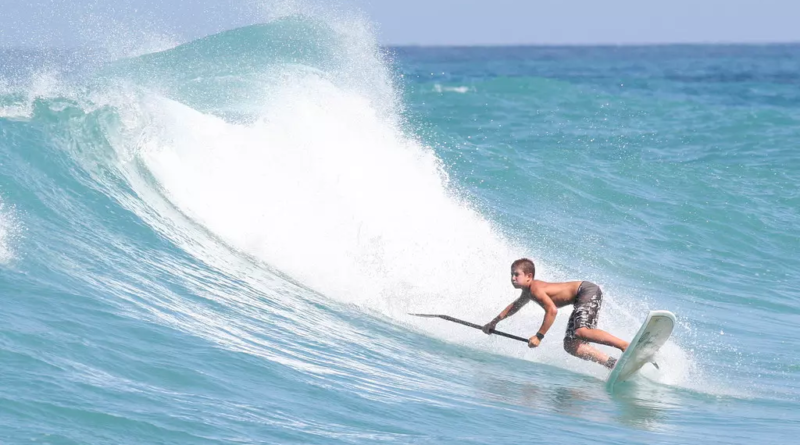Top 5 Tips for Buying a Surf SUP
Choosing the right surf SUP (stand-up paddleboard) can make a significant difference in your surfing experience. Here are five essential tips to guide you in selecting the perfect SUP board for your needs:
1. Don’t Go Too Small Too Soon
It’s tempting to aim for the smallest board you can handle, especially when seeking high performance. However, this isn’t always the best approach for intermediate paddlers. Smaller boards offer less volume (float), making them tricky to balance on in choppy conditions. They also provide minimal glide, which can reduce your wave count as you spend more time paddling rather than riding.
As a general guideline, consider a board with volume equal to 1.5 times your body weight in kilograms. For example, if you weigh 80kg, a 120-liter surf SUP might be a good starting point. Other factors like width also play a crucial role. For those under 65kg, a board around 27-28.5 inches wide is usually sufficient. Most paddlers in the 75-90kg range should look for boards between 28.5-30.5 inches, while heavier paddlers might need boards between 30-33 inches, depending on their balance and ability.
2. Match Your Board to Your Style and Conditions
Choose a board that suits both your surfing style and local wave conditions. For example, if your local break typically has slow, powerless waves, an aggressive surf shape won’t perform well. A longer, more voluminous board that can catch small waves might be more suitable.
If you frequently encounter glassy conditions but face strong offshore winds, a feather-light carbon board may not be ideal. A board that allows you to effectively cross-step and nose ride can be beneficial for traditional longboard-style surfing. Conversely, if you prefer a more radical approach with tight turns and tricks, a board under 9 feet might offer better performance for carving and maneuverability.
3. Consider Double Leash Plugs
Double leash plugs are highly recommended as you start tackling larger surf. They provide an extra layer of safety in case one leash cord breaks, helping you avoid the awkward situation of swimming back to shore with your paddle. Always inspect your equipment before each session to ensure that both your leash and attaching cords are in good condition.
4. Research Reviews and Videos
Before making a purchase, take the time to read reviews and watch videos of the SUP board in action. While reviews can offer useful insights, remember that a board that performs well for a professional rider in specific conditions may not be the best fit for your local surf. Consider where and how the board was tested to ensure it aligns with your usual surfing conditions.
5. Choose the Right Construction
Board construction varies widely, and selecting the right one depends on how you treat your equipment. If you take good care of your board—rinsing it with fresh water after each session and keeping it clean—you might be fine with most constructions. However, if you’re less meticulous, avoid brands offering lightweight constructions at lower price points, as these might not be as durable.
Boards that balance weight and strength often come at a higher price, usually starting at around £800. Examine the construction details, including the number of fiberglass layers and the type of materials used, to ensure you’re getting a board that’s both strong and suitable for your needs.
By following these tips, you can select a surf SUP that fits your weight, skill level, surfing style, and local conditions, ensuring a more enjoyable and successful surfing experience.
